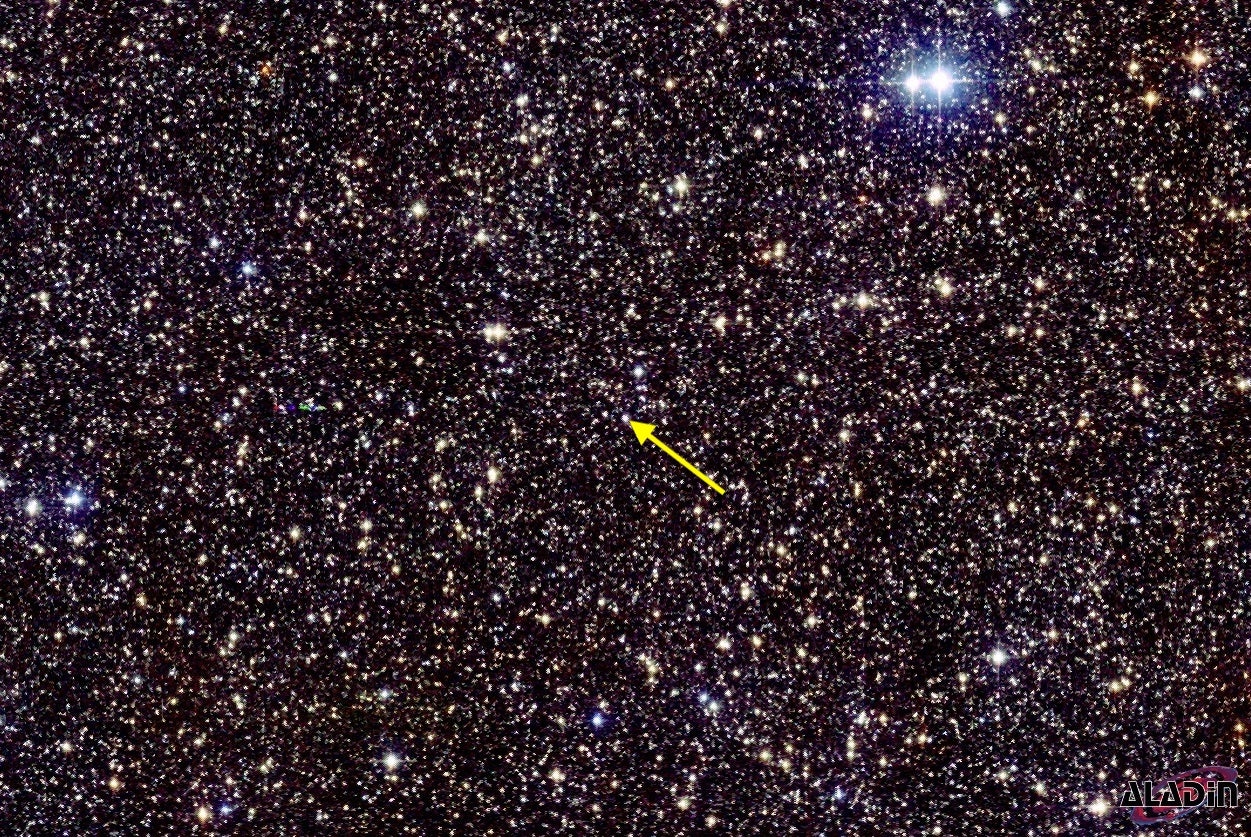
Aquila’s SS 433 is one of the weirdest stellar objects in the sky. Its designation is from C.B. Stephenson and N. Sanduleak’s catalog of stars with hydrogen emission lines, which typically have extended envelopes surrounding them. This object’s peculiar nature sparked intense research on it around 1980. Astronomers now describe it as the first known microquasar.
Quasars are supermassive black holes billions of times the mass of the Sun. Now, think of such behemoths shrunk down to the scale of a single star. SS 433 consists of an A-type star orbiting a stellar-mass black hole surrounded by an accretion disk. Powerful X-rays radiate energy away from the disk as opposing jets of superheated gas shoot along the axis of rotation. The pair lies in the heart of the supernova remnant W50, also called the Manatee Nebula. Recent investigations have discovered the region also emits gamma rays.
You can find SS 433 just over 1° southeast of 19 Aquilae, in a rich star field near two open clusters (NGC 6755 and 6756). Visually, SS 433 appears as one faint star among many — and at 15,000 light-years distant, that isn’t surprising. Its light varies irregularly, but the times I observed it, it was about 14th magnitude. It lies just offset from a small group of stars consisting of an 11th-magnitude sun with a close pair of mid-12th-magnitude stars to its south, and a 13th-magnitude star just south of these.
As soon as I read of its existence, I sought out a telescope large enough to see it. I’m sucker for observing usual objects, even if they look like ordinary faint stars. But we know that looks are deceiving. If only we had X-ray vision!









